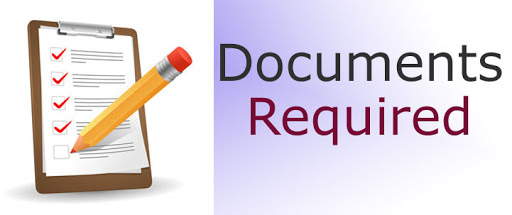- By TOP CHINA FREIGHT
- September 25, 2025
- Shipping
Table of Contents
Efficient toll China to Australia freight forwarding is essential for businesses importing goods from China to Australia. With growing trade volumes, understanding shipping methods, costs, transit times, and customs requirements is vital. By leveraging expert freight forwarding services, companies can optimize their supply chain, reduce delays, and ensure smooth delivery of cargo. This guide provides a comprehensive overview of logistics strategies, client insights, and practical tips.

What shipping methods are available from China to Australia?
Importers can choose from several shipping options depending on urgency, budget, and cargo type:
| Shipping Method | Transit Time | Cost | Pros | Cons |
|---|---|---|---|---|
| Sea Freight FCL | 20–35 days | $$ | Cost-effective for bulk cargo, secure | Slower than air, longer lead time |
| Sea Freight LCL | 25–45 days | $ | Affordable for small shipments | Consolidation may cause delays |
| Air Freight | 3–7 days | $$$ | Fast and reliable | High cost, limited cargo size |
| Express Courier | 1–5 days | $$$$ | Fastest option, door-to-door | Very expensive, small shipments only |
Choosing the right method requires balancing speed, cost, and cargo type to meet business requirements.
Which Chinese ports are most used for Australian shipments?
Major export ports influence shipping schedules and costs:
- Shanghai: Frequent sailings, high volume, central for Eastern China.
- Shenzhen/Guangzhou: Near South China manufacturing hubs; fast transit to eastern Australian ports.
- Ningbo: Competitive rates, regular departures.
- Qingdao/Tianjin: Northern China, longer transit times but suitable for East Coast Australia.
Choosing the right port can save days in transit and reduce costs.
What are the average transit times from China to Australia?
Transit time varies based on shipping method, port of origin, and final destination:
| Origin Port | Destination Port | Average Transit Time |
|---|---|---|
| Shanghai | Sydney | 20–25 days |
| Shenzhen | Melbourne | 18–22 days |
| Ningbo | Brisbane | 22–28 days |
| Qingdao | Perth | 28–35 days |
Direct sailings are faster, while shipments with transshipment may add 5–10 extra days.
What documents are required for customs clearance?

Proper documentation is critical to avoid delays:
| Document | Purpose |
|---|---|
| Bill of Lading | Proof of shipment ownership |
| Commercial Invoice | Declares shipment value for customs |
| Packing List | Details cargo contents |
| Import Declaration | Required by Australian Customs |
| Customs Bond | Ensures legal compliance |
| Certificate of Origin | Required for certain goods |
How can businesses optimize toll China to Australia freight forwarding?
Several strategies can enhance efficiency:
- Book shipments early to avoid peak season delays.
- Choose direct routes to minimize transit time.
- Use experienced freight forwarders to negotiate rates and ensure space.
- Implement digital tracking to monitor shipments.
- Plan shipments around seasonal peaks to avoid congestion.
Proper planning ensures cost savings, on-time delivery, and smooth logistics operations.
Case Study: Electronics Shipment from Shenzhen to Sydney

A company imported 800 cartons of electronics via FCL from Shenzhen. Original transit time: 22–25 days. By working with a freight forwarder:
- Optimized direct routes reduced transit to 19 days.
- Pre-clearance of customs minimized port delays.
- Real-time tracking allowed proactive problem resolution.
Outcome: on-time delivery, reduced inventory holding costs, and improved planning for future shipments.
How do sea and air freight compare for Australia shipments?

| Mode | Transit Time | Cost | Best For |
|---|---|---|---|
| Sea Freight | 18–35 days | $$ | Bulk shipments, cost-effective |
| Air Freight | 3–7 days | $$$ | High-value, urgent shipments |
| Express Courier | 1–5 days | $$$$ | Small, urgent deliveries |
Sea freight is ideal for volume and cost-efficiency, while air freight suits time-sensitive cargo.
How do seasonal trends affect toll China to Australia freight forwarding?
1.Chinese New Year:
Reduced capacity, longer transit.
2.Australian holiday peaks:
Increased demand, potential congestion.
3.Monsoon or storm seasons:
May delay shipments in certain ports.
Planning shipment schedules around these peaks avoids delays and extra costs.
What future trends are shaping China-Australia freight forwarding?
Real-time tracking, electronic documentation.
Fuel efficiency and emission reductions.
Adapting to demand fluctuations.
Faster container handling reduces dwell times.
Conclusion
Toll China to Australia freight forwarding involves careful selection of shipping methods, ports, and forwarders. By understanding costs, transit times, and documentation requirements, importers can reduce delays and optimize their supply chain. Leveraging experienced forwarders, planning shipments strategically, and implementing tracking solutions ensures reliable, cost-effective, and timely delivery of goods from China to Australia.
Need a Shipping Quote?
If you want expert guidance and peace of mind, our team is ready to assist.
TJ China Freight offers tailored solutions to help businesses of all sizes ship more reliably from China.

FAQ
Q1:What shipping methods are available from China to Australia?
Sea freight, air freight, express courier, and multimodal options, suitable for both bulk and small shipments.
Q2:Which ports are most efficient for shipments to Australia?
Shanghai, Shenzhen, Ningbo, and Qingdao are major ports, offering competitive schedules and reliable transit
Q3:What documents are needed for customs clearance?
Bill of Lading, Commercial Invoice, Packing List, Import Declaration, Customs Bond, and Certificate of Origin if required.
Q4:How can I reduce shipping costs?
Book early, choose direct routes, consolidate shipments, and work with experienced freight forwarders for better rates.
Q5:Can freight forwarders handle complex shipments?
Yes. They offer warehousing, distribution, and multimodal transport to manage complex supply chains and seasonal peaks.
